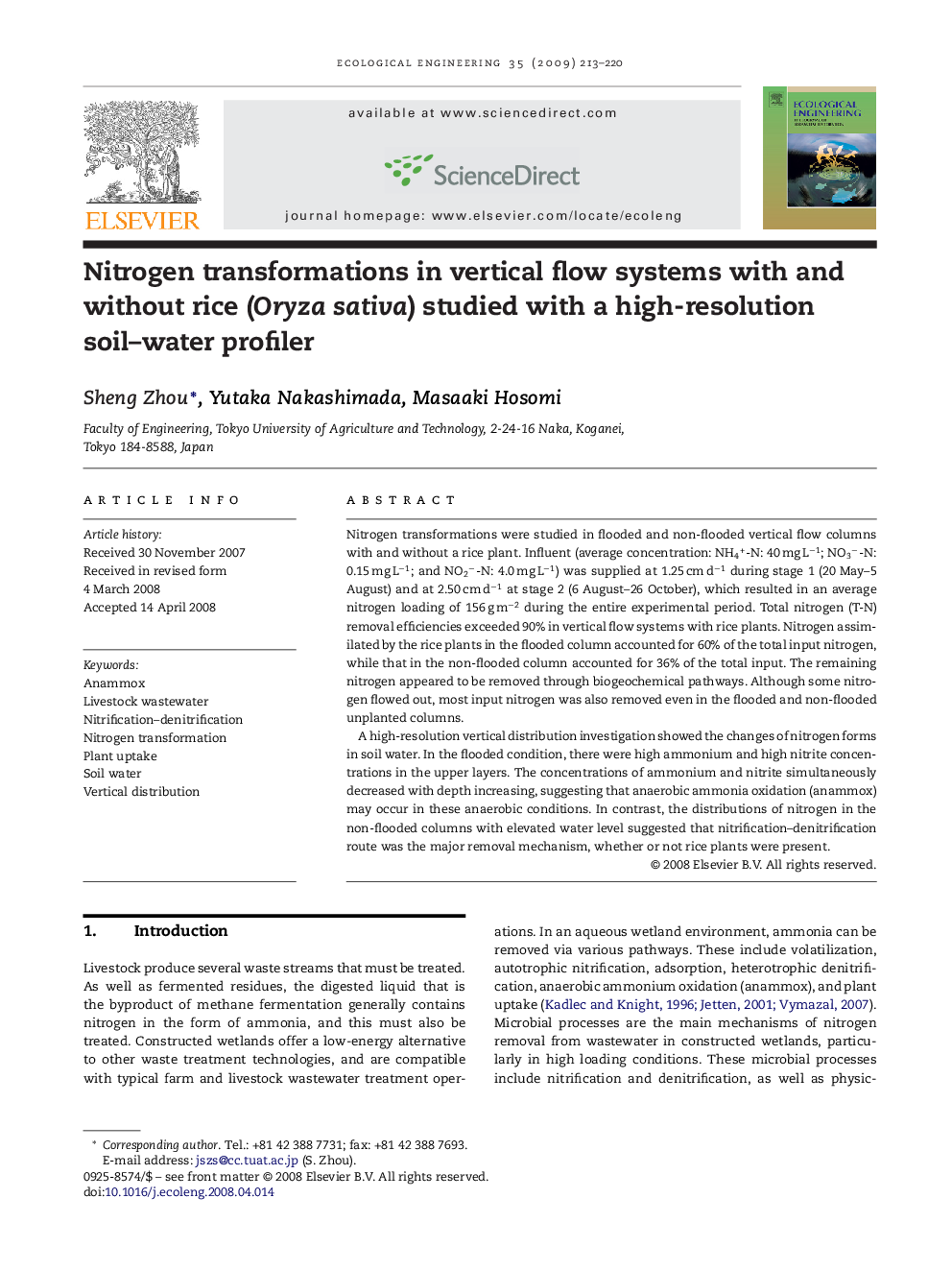| Article ID | Journal | Published Year | Pages | File Type |
|---|---|---|---|---|
| 4391020 | Ecological Engineering | 2009 | 8 Pages |
Nitrogen transformations were studied in flooded and non-flooded vertical flow columns with and without a rice plant. Influent (average concentration: NH4+-N: 40 mg L−1; NO3−-N: 0.15 mg L−1; and NO2−-N: 4.0 mg L−1) was supplied at 1.25 cm d−1 during stage 1 (20 May–5 August) and at 2.50 cm d−1 at stage 2 (6 August–26 October), which resulted in an average nitrogen loading of 156 g m−2 during the entire experimental period. Total nitrogen (T-N) removal efficiencies exceeded 90% in vertical flow systems with rice plants. Nitrogen assimilated by the rice plants in the flooded column accounted for 60% of the total input nitrogen, while that in the non-flooded column accounted for 36% of the total input. The remaining nitrogen appeared to be removed through biogeochemical pathways. Although some nitrogen flowed out, most input nitrogen was also removed even in the flooded and non-flooded unplanted columns.A high-resolution vertical distribution investigation showed the changes of nitrogen forms in soil water. In the flooded condition, there were high ammonium and high nitrite concentrations in the upper layers. The concentrations of ammonium and nitrite simultaneously decreased with depth increasing, suggesting that anaerobic ammonia oxidation (anammox) may occur in these anaerobic conditions. In contrast, the distributions of nitrogen in the non-flooded columns with elevated water level suggested that nitrification–denitrification route was the major removal mechanism, whether or not rice plants were present.
